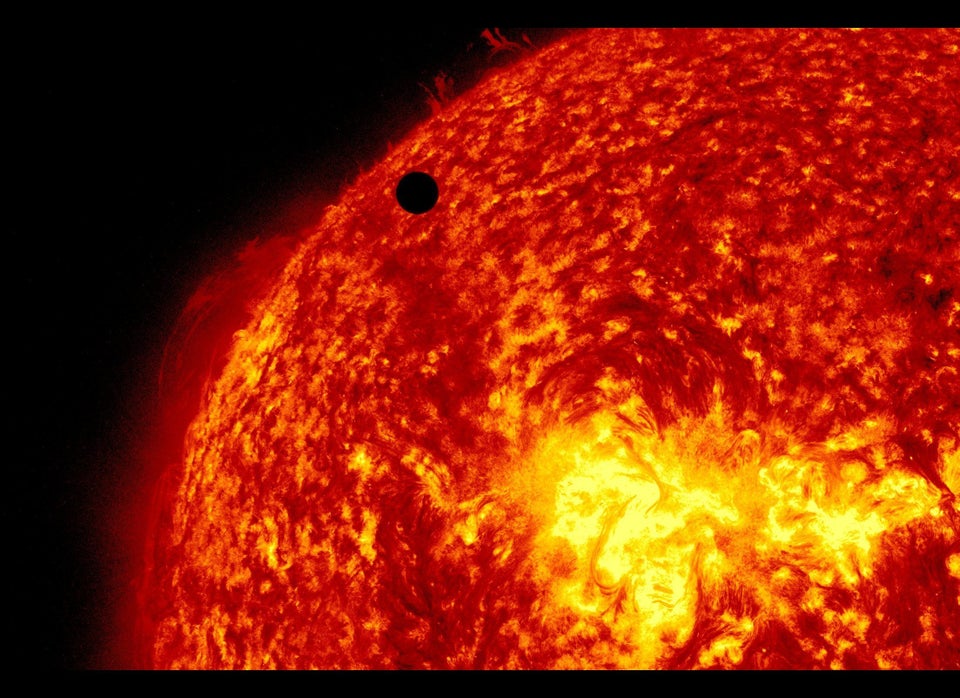
WASHINGTON -- Are your solar goggles ready for Tuesday night's major astronomical event?
Venus will be crossing directly between the Earth and the Sun. In the D.C. area, the "transit of Venus" -- which will look like a black disk traveling across the sun -- can be seen from just after 6 p.m. until sunset.
Sky conditions in the D.C. area are not very favorable for tonight, but as Capital Weather Gang reports, it's not completely hopeless.
This is the second transit of Venus since 2004, but the event won't happen again until December 2117 (the transits are paired, coming eight years apart -- the one after that will be in December 2125). So ... your mandate to watch has been issued.
But don't watch directly. The transit of Venus is similar to an eclipse; sunglasses won't give your eyes enough protection for looking right at the sun. Be sure to use solar filter glasses -- they're available at some science stores, though the National Air & Space Museum, the National Geographic Museum and REI all told us on Tuesday they aren't selling them -- or make a pinhole projector (it's easy; here's instructions) to watch the transit projected onto a piece of paper.
If you don't have your own gear -- or even if you do, and you'd like to be around people who know what they're looking at -- try watching the transit of Venus with one of the D.C. area astronomy clubs.
The Analemma Society of Great Falls and the Northern Virginia Astronomy Club are hosting a viewing party at the Turner Farm Park (925 Springvale Rd., Great Falls, Va.). Telescopes will be available.
NOVAC is hosting another transit of Venus viewing at C.M. Crockett Park (10066 Rogues Rd., Midland, Va.).
In Maryland, the Howard Astronomical League's viewing party -- which includes a short presentation before the transit begins -- will be at the Howard County Conservancy (10520 Old Frederick Rd., Woodstock, Md.)
The University of Maryland is hosting a viewing party on the roof of Stadium Drive Garage, next to Byrd Stadium (Stadium Drive, College Park, Md.).
In D.C. itself, watch the transit of Venus at the National Air And Space Museum. (Independence Avenue at 6th Street SW).
If you can't make it out to a viewing party, watch online. The National Solar Observatory will be presenting a live webcast of the event -- they've got a page on which they'll be showing images of the transit captured by telescopes all over the world. NASA will air a live webcast from observatories in Hawaii.
Bring some facts with you to your viewing party:
- Six transits of Venus have been seen by humans since British astronomer and cleric Jeremiah Horrocks predicted the event in 1639. They were in 1639, 1761, 1769, 1874, 1882 and 2004.
Until Pettit's amazing photos go live, check out this slideshow showing previous transits of Venus:
